Buying Clothes: The Buyerachy of needs
by Hannah Matthews
The clothes we decide to wear not only express who we are but also become the armour that protects us. Many of us began to create a uniform. Something that can be thrown on quickly with little thought. There is nothing wrong with this and sometimes it is essential when we have a life to live. However, changing our fast fashion habits and being conscious of what we are wearing can be beneficial for us and the planet. It is about slowly building an armour that not only protects you but also the world that you live in.
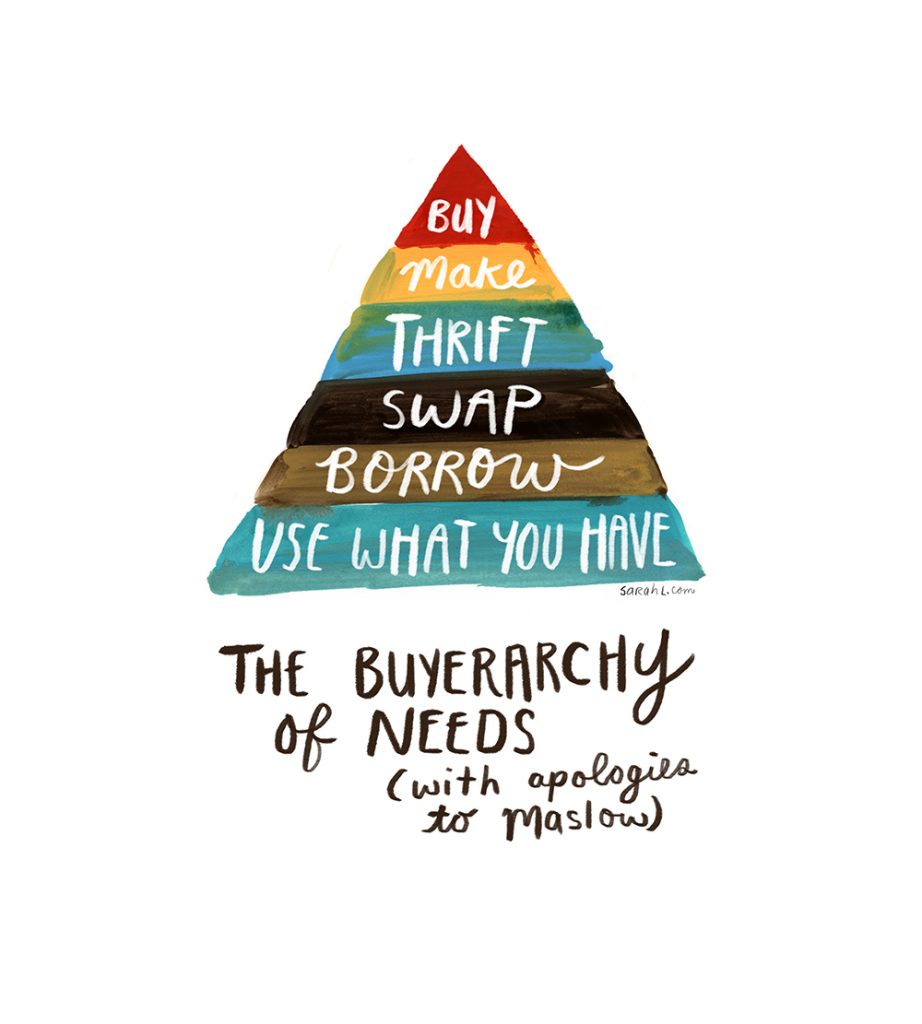
The visual designer Sarah Lazarovic created something known as the “Buyerachy of needs” to help break down the steps we need to take in order to live a more sustainable lifestyle. She represents the levels of consumption through a pyramid. The bottom of the pyramid being the best way, all the way to the top of the pyramid being the last resort. We can also use this method to dress more sustainably.
Step 1 – Use What you have:
At the bottom of this pyramid and the first essential step in sustainability is use what you have. I’ve started to look at the clothes I already have and begun to change up the way I pare and style things. My mum always tells me the story of my glamorous great grandmother. When she passed away, they went to clear her wardrobe. They thought it would be full to brim with elegant garments, to their surprise however she just had a few black dresses and a fur coat. At the end of the day it’s not what you wear but how you wear it.
Step 2 – Borrow:
The level above this and the second step we should take is borrow. As a girl with two sisters this method can start wars so be careful. However, it can also be a great alternative to buying new. It’s probably something you do naturally with friends already. This is something I used to always do in school. Every time we had a big event coming up, I’d flick through Facebooks pictures of my friends in search of a new outfit. When shopping for once of events such as graduations, school dances or weddings borrowing, or renting should be our first port of call instead of filling our wardrobe with things we will never wear again.
Step 3 – Swap:
The next step is swap. We’ve all had that dilemma in which our wardrobes are crammed full and yet we have nothing to wear. We have the extra pressure these days to look new and fresh all the time because not only will we be seen at the party but also on the feeds of every person we’ve ever known. So rather than splashing out on something new trade with friends. Host a clothing swap so you can swap out your preloved bits for something that you’ve been eyeing up on a friend for months.
Step 4 – Thrift:
My personal favourite is thrift. The way in which I have begun to reduce the environmental and ethical impacts of my wardrobe is shopping second hand. This has been kinder to my wallet and helped me develop my personal style. Shopping second hand lets you be creative. It encourages you to look at clothing you may not otherwise have and style and alter it in a way that suits you.
Step 5 – Make:
Sarah also suggests we make. In terms of clothes I lack this skill needed to design and make a nice new outfit but rather than make I alter and mend. It doesn’t cost very much to get things altered to fit you and it can also make the piece a little more unique. I think it is also important to shift our mind set and instead of replacing something old we should try fix it. Brands such as Patagonia offer services to help you fix items you bought.
Step 6 – Buy:
At the top of the pyramid and what Sarah says is the last resort is to buy. However, I don’t think buying is the devil as long as we do it consciously. It is important that not all the responsibility is placed on the consumer. To make greater strides to sustainability the fashion industry must change. This begins with the way in which the clothing is designed, produced and marketed. The industry must take responsibility for both the environmental and socio-economic impact they have.
As consumers however, we can choose brands that are at least making conscious efforts. The “Good on you” app is something I have recently discovered. It gives you digestible information on brands, a rating to each brand and breaks down the ways in which they are doing well and what they need to improve on. It also suggests other similar and more sustainable brands for you to try.
These individual steps can seem very small in the grand schemes of things, but they do have a greater purpose. When we begin to show that we care in small ways it encourages those around us. There is a power in collectively caring about something. It draws attention to the bigger issues. It shows the people in positions of authority and influence that we care. That collectively we want better for our planet and the people that are in it.

Hannah is currently working with people in homelessness and addiction. However, her other interests include fashion and she is also committed to doing her part in advocating for our planet.

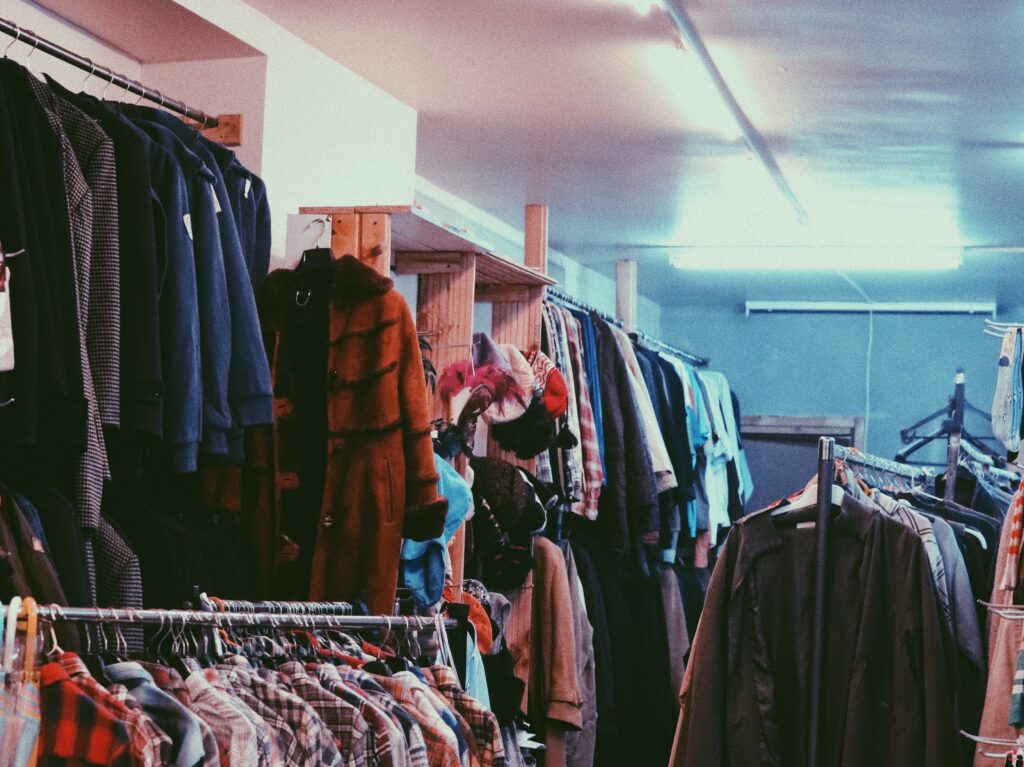
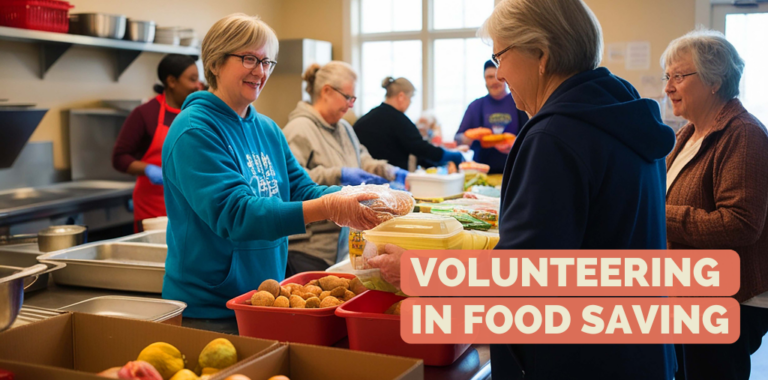
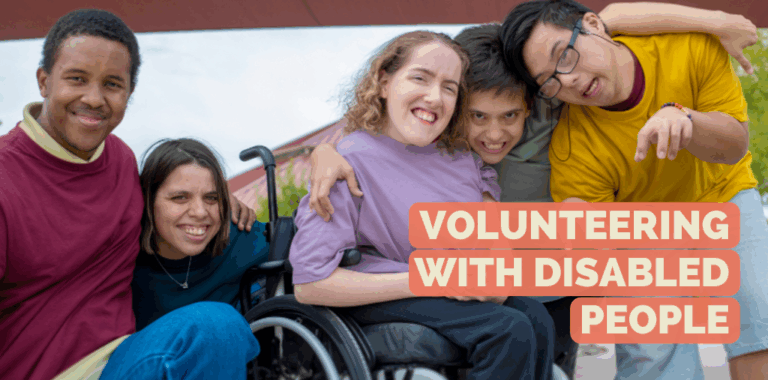
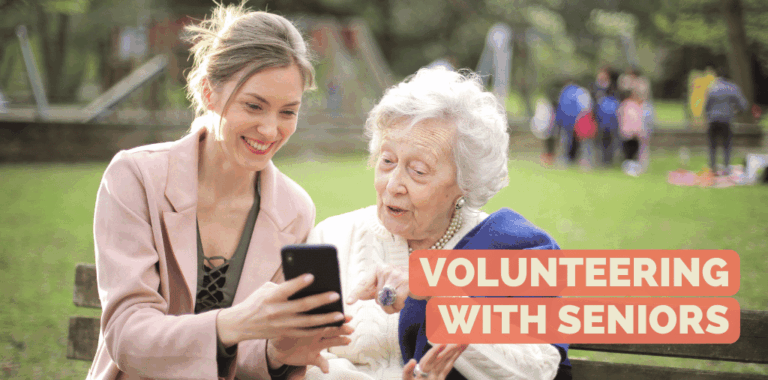

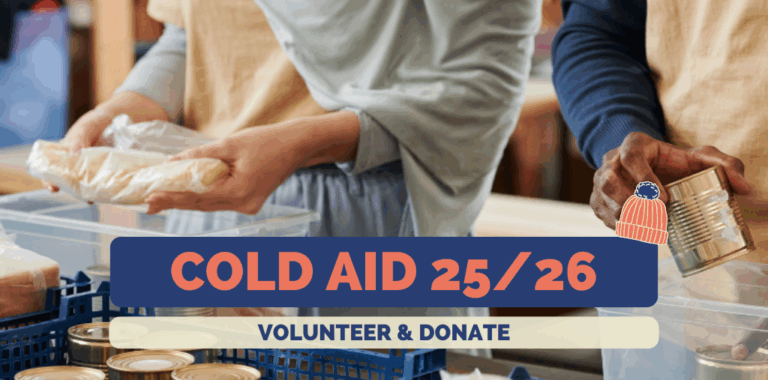
This information is not only inspiring but very helpful in regards to being unique in the fashion world and helping save the planet ! Thank you !!
bravo Hannah. keep walking.!